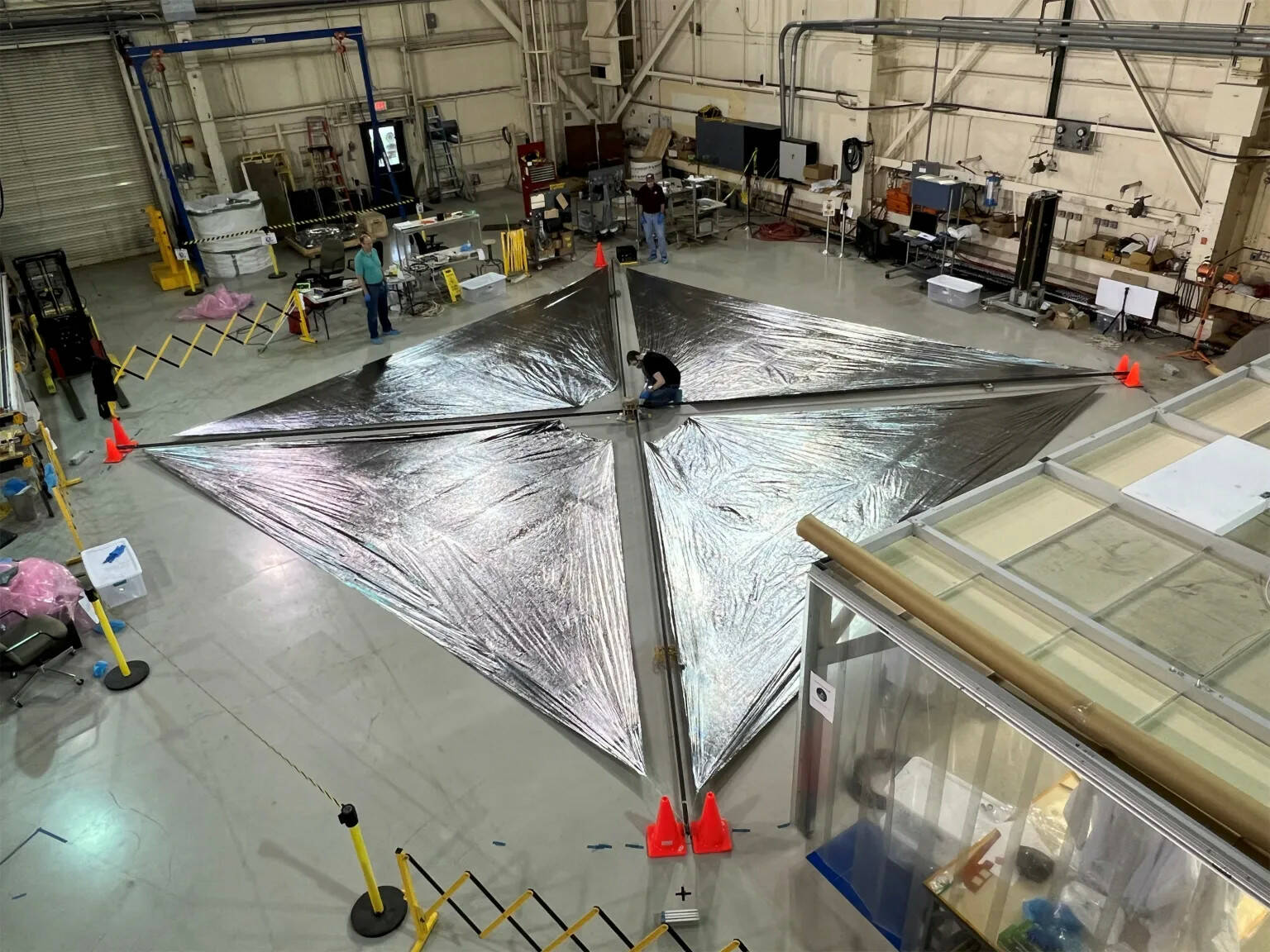NASA’s solar sail is tumbling, but that’s part of the plan

NASA has announced its experimental ACS3 solar-sailing spacecraft is working as expected, after it was spotted tumbling in the night sky.
The 80 m2 (860 sq ft) Advanced Composite Solar Sail System (ACS3) successfully spread its sails last week. The spacecraft uses pressure produced by solar radiation to move – doing away with conventional rocket propellant. NASA is testing the sail in the hope that its design, and the materials used, are viable for future vessels.
As the boffins put it:
Questions were raised this week after the instrument – which launched in April and is now in Earth’s orbit – was observed to be slowly tumbling, gyrating, or wobbling.
NASA’s Langley Research Center assured the public that’s neither unusual nor worrying.
“Our Solar Sail System is sailing around Earth, slowly tumbling as expected while the mission team characterizes its boom and sails,” the agency explained Thursday.
You can, we’re told, track the craft from NASA’s app.

Engineers at NASA’s Langley Research Center work on an unfurled Advanced Composite Solar Sail System’s solar sail – Click to enlarge. Source: NASA
The first probe to use solar radiation pressure as a major means for orientation during flight was NASA’s 1970s-era Mariner 10, which caught sunlight on its solar panels and high-gain antenna. ACS3 is using vastly larger composite sails to do this – and hopefully far more efficiently.
NASA is not alone in pursuing solar sails. Japan’s JAXA managed a Venus flyby in 2010 using solar sails. And the Planetary Society executed an unfurling in 2019.
It’s not ACS3’s sails that are of most interest: the booms on which they hang are said to be “made from a polymer material that is flexible and reinforced with carbon fiber.”
“This composite material can be rolled for compact stowage, but remains strong and lightweight when unrolled. It is also very stiff and resistant to bending and warping due to changes in temperature,” according to NASA.
“The ACS3 technology demonstration will also test an innovative tape-spool boom extraction system designed to minimize jamming of the coiled booms during deployment.”
Coiled components matter, because they mean items with large surface area can be packed into the small volume of spacecraft, making them easier to launch. ®